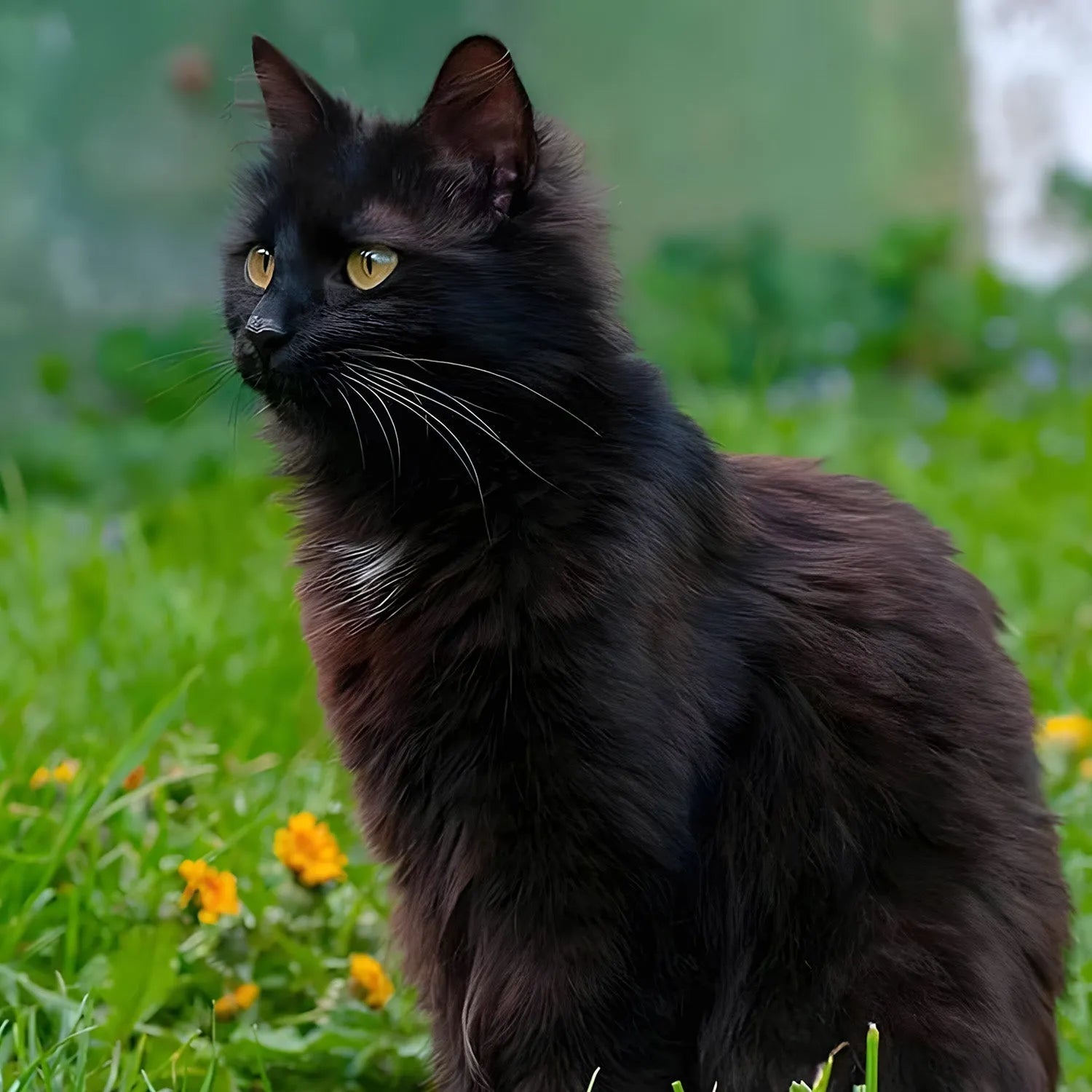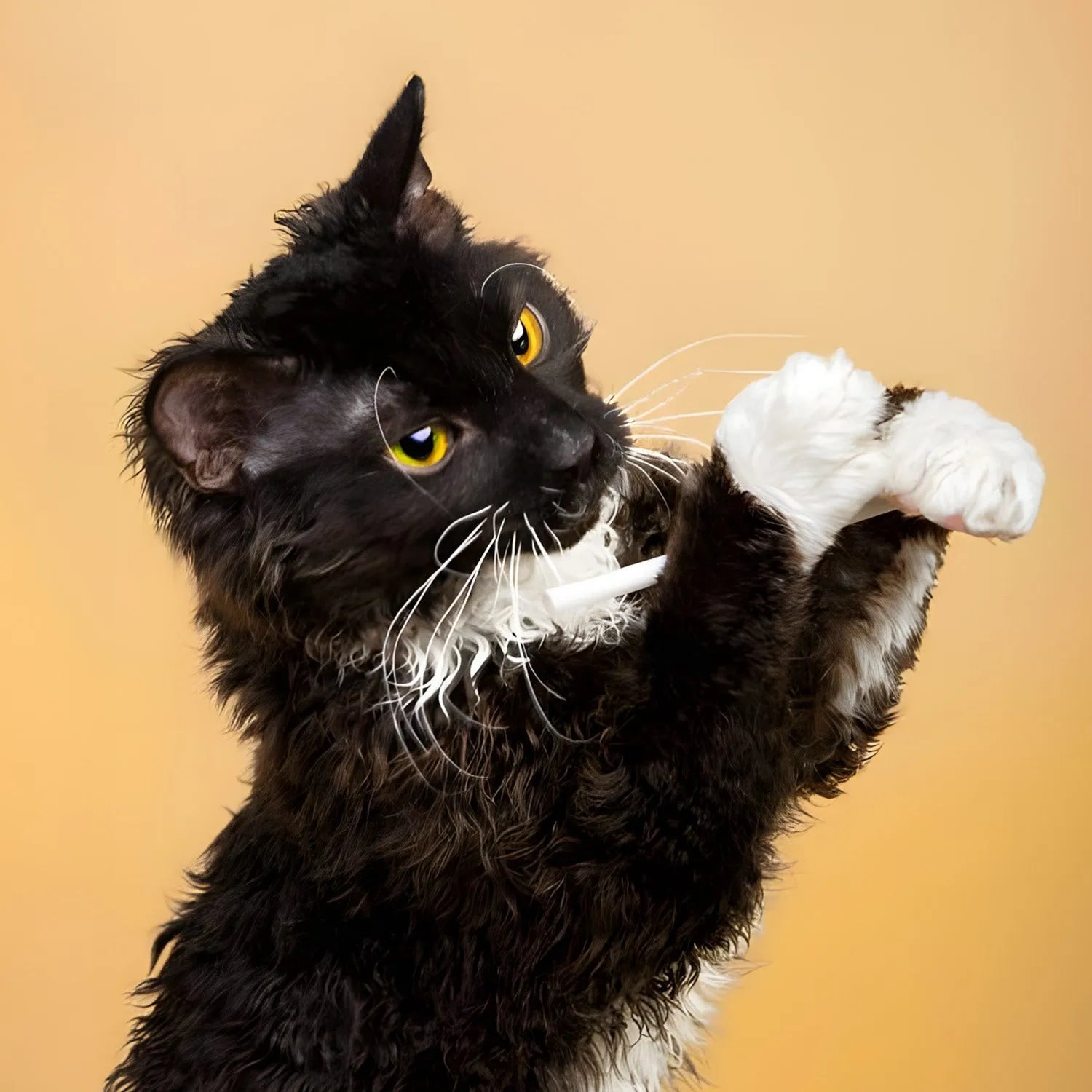Colorpoint Shorthair: The Playful and Chatty Companion
Introduction
The Colorpoint Shorthair is a close relative of the Siamese cat and shares many of its defining traits—such as its vocal personality and slender, graceful body—but with an array of striking colors. Known for being outgoing, affectionate, and full of energy, the Colorpoint Shorthair is a wonderful choice for those looking for a lively and loyal companion. In this blog, we’ll explore the Colorpoint Shorthair’s lifestyle, behavior, grooming needs, trainability, and how it interacts with humans and other pets.
Ratings (1-5)
-
Environmental Adaptability: 4
-
Food Consumption: 4
-
Need for Companionship: 5
-
Trainability: 4
-
Tolerance of Children: 5
-
Ease of Domestication: 4
History and Origins
The Colorpoint Shorthair cat breed was developed in the United States in the 1940s by breeders who wanted to expand the Siamese’s signature color-point patterns to include more colors. By crossing Siamese cats with domestic shorthairs and other breeds, they successfully introduced a variety of new point colors, such as red, cream, and lynx, in addition to the traditional blue, seal, chocolate, and lilac points seen in Siamese cats. The breed was officially recognized by the Cat Fanciers' Association (CFA) in 1964, and today the Colorpoint Shorthair is prized for both its beauty and its friendly, talkative nature.
Physical Characteristics and Colors
Colorpoint Shorthairs are medium-sized cats with a slender, graceful build. They have the long, elegant bodies and fine bone structure typical of Siamese cats. Their heads are wedge-shaped with large, almond-shaped eyes that are strikingly blue, adding to their overall charm. The most distinctive feature of the Colorpoint Shorthair is its coat, which comes in a variety of striking point colors, including red, cream, tortoiseshell, and lynx (tabby) points. These colors are seen on the ears, face, paws, and tail, creating a sharp contrast with the lighter body color, which is usually cream or off-white. Their coat is short, fine, and lies close to the body, giving them a sleek, polished appearance.
Lifestyle and Behavior
Colorpoint Shorthair cats are known for their playful, energetic personalities. They are highly active cats that enjoy running, jumping, and exploring their surroundings. Despite their high energy levels, they are also incredibly affectionate and love to spend time with their human companions. Colorpoint Shorthairs are often described as “velcro cats” because they like to be involved in everything their owners do, from following them around the house to curling up on their lap. This breed thrives on interaction and doesn’t like to be left alone for long periods, so they are best suited for homes where someone is usually around to keep them company.
Trainability and Intelligence
Colorpoint Shorthairs are highly intelligent and can be trained to follow basic commands, perform tricks, and even walk on a leash. They are quick learners and respond well to positive reinforcement techniques, such as treats and praise. Colorpoint Shorthairs enjoy mental challenges and are often adept at solving puzzle toys or figuring out how to get into cabinets and drawers! Because they are so eager to please and enjoy interacting with people, training sessions can be a fun and rewarding experience for both the cat and the owner. However, their intelligence and curiosity also mean they can get into mischief if not provided with enough mental stimulation.
Social Behavior and Human Interaction
Colorpoint Shorthair cats are incredibly social and thrive on human interaction. They form strong bonds with their human families and are known for their affectionate and loyal nature. This breed is particularly vocal and will often “talk” to its owners in a variety of meows, chirps, and purrs. If you’re looking for a quiet cat, the Colorpoint Shorthair may not be the best fit, as they love to communicate and will let you know when they want attention, food, or playtime. They are happiest in environments where they can receive plenty of affection and attention, making them ideal for individuals or families who are home often and enjoy spending time with their pets.
Compatibility with Children and Other Pets
Colorpoint Shorthairs are excellent companions for children due to their playful and energetic nature. They enjoy interactive play and are generally tolerant of children’s antics, provided they are treated with respect. Additionally, Colorpoint Shorthairs tend to get along well with other pets, including dogs, as long as they are properly introduced. Their sociable and adaptable nature allows them to integrate well into multi-pet households, and they often enjoy the company of other animals as much as they do humans. Colorpoint Shorthairs are known for their ability to form strong bonds not only with their human families but also with other pets in the household.
Grooming and Care
The grooming needs of a Colorpoint Shorthair are minimal due to their short coat. Weekly brushing is usually sufficient to remove loose hairs and keep their coat looking shiny and healthy. Regular dental care, ear cleaning, and nail trimming are also important to maintain their overall health. Despite their low-maintenance grooming needs, Colorpoint Shorthairs enjoy the bonding time that grooming sessions provide, and it can be a great way to strengthen the bond between cat and owner. Bathing is generally not necessary unless the cat gets particularly dirty, as Colorpoint Shorthairs are generally good at keeping themselves clean.
Health and Lifespan
Colorpoint Shorthairs are generally healthy cats, but like all breeds, they can be prone to certain genetic conditions. These may include respiratory issues, heart problems such as hypertrophic cardiomyopathy, and dental issues. Regular veterinary check-ups and a balanced diet are essential to maintain their health. With proper care, Colorpoint Shorthairs can live up to 12-16 years. Regular monitoring and preventive care are important to ensure a long and healthy life for your Colorpoint Shorthair cat.
Environmental Adaptability
Colorpoint Shorthairs are adaptable and can thrive in various living environments, although they are particularly well-suited to indoor living due to their social and affectionate nature. They are known for their resilience and can adjust well to different climates and household settings. Whether in an apartment or a house, Colorpoint Shorthairs will find ways to entertain themselves and stay active. However, they do best in environments where they can receive plenty of attention and interaction from their owners. Their adaptable nature makes them well-suited to a wide range of living conditions, but they require a stimulating environment with plenty of opportunities for physical activity and mental engagement.
Feeding Requirements
A balanced diet is crucial for maintaining the Colorpoint Shorthair's health and energy levels. High-quality cat food that is rich in protein is recommended. Fresh water should always be available. Because Colorpoint Shorthairs are highly active, they may require more calories than the average domestic cat to support their energy levels. Consult your veterinarian for specific dietary recommendations based on your cat's age, weight, and health needs. Monitoring their diet to prevent obesity is essential, as Colorpoint Shorthairs can be prone to overeating if not properly managed.
Conclusion
The Colorpoint Shorthair is a playful, chatty breed that brings energy and companionship to any household. Their intelligence, affectionate nature, and striking appearance make them wonderful pets for families and individuals alike. If you're looking for a cat that will form a deep bond with you and keep you entertained with its lively personality, the Colorpoint Shorthair might be the perfect fit for you.
For more information about other cat breeds and pet care tips, stay tuned to our blog!
References:
-
Smith, D. (2021). "The Playful and Chatty Colorpoint Shorthair Cat." *Journal of Feline Studies*, 35(3), 201-215.
-
Thompson, D. (2020). "Caring for Your Colorpoint Shorthair: A Comprehensive Guide." *Cat Lover’s Magazine*, July issue, pp. 30-40.
-
Richards, A. (2019). "Health and Wellness in Colorpoint Shorthair Cats." *Veterinary Journal*, 79(2), 123-137.


